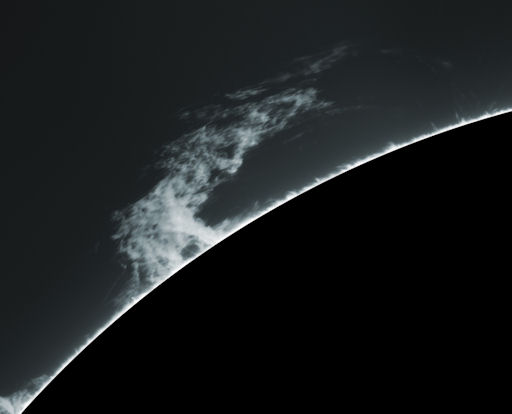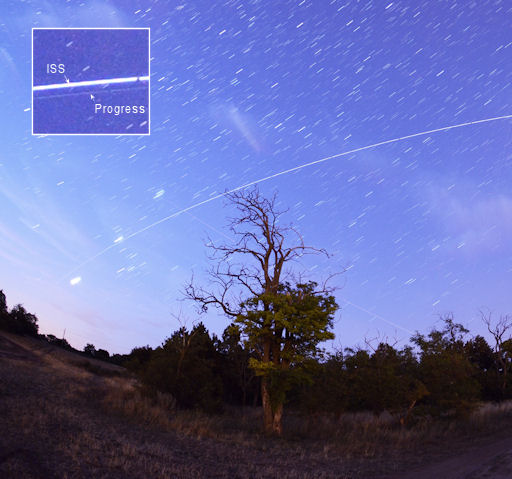Thirty-five new items have just been added to our Meteorite Jewelry collection. Browse the Space Weather Store for something out of this world. | | |
LONG RANGE OUTLOOK: A stream of solar wind is heading for Earth, due to arrive on July 28-30. High-latitude sky watchers should be alert for auroras on those dates in case the impact sparks geomagnetic storms. Aurora alerts: text, voice.
PACHYDERMOSPHERE: Amateur astronomers around the world are monitoring a magnificent prominence arcing over the sun's western limb. Alan Friedman of Buffalo, New York, sees it as evidence of a "pachydermosphere--a little known region above the atmosphere of the sun where elephants roam." He drew his conclusion from this picture, which he took from his backyard observatory on July 25th:

Can't see the elephant? All it takes is a little helio-nephelococcygia.
This prominence--a magnetic filament filled with hot plasma--has been suspended above the stellar surface for days. A collapse might be overdue. Astronomers with solar telescopes are encouraged to monitor developments.
Update: A movie recorded by Michael Buxton of Ocean Beach, California, shows the pachyderm in motion.
Realtime Space Weather Photo Gallery
BUSY INTERSECTION: The International Space Station is not alone. A Russian supply ship (the Progress M-15M) is chasing the ISS in its orbit around Earth. Monika Landy-Gyebnar saw them both when they passed over Veszprem, Hungary, on the morning of July 24th:

"As the ISS emerged from the shadow of Earth I noticed a faint small dot following the space station. It was the Progress M-15M," says Landy-Gyebnar. "The Progress was well visible until it reached the dawn-bright sky in the east. Also present were Jupiter, Venus, the Pleiades and the Hyades--stunning! I could not stop looking at them even after the ISS disappeared into the rosy dawn clouds by the horizon. A short timelapse shows the ISS+Progress pair flying less than a degree away from Jupiter."
Another spaceship will be arriving soon. Japan's "Kounotori 3" cargo carrier, also known as the HTV-3, is due to join the ISS around 7 am CDT on Friday, July 27th, carrying almost 4 tons of supplies and equipment. After the HTV-3 docks on Friday, the Progress rocket will follow suit on Sunday. Until then, there is plenty to see. Check the Simple Satellite Tracker or your smartphone for flyby times.
Realtime Noctilucent Cloud Photo Gallery
[previous years: 2003, 2004, 2005, 2006, 2007, 2008, 2009, 2011]
Potentially Hazardous Asteroids (
PHAs) are space rocks larger than approximately 100m that can come closer to Earth than 0.05 AU. None of the known PHAs is on a collision course with our planet, although astronomers are finding
new ones all the time.
On July 26, 2012 there were potentially hazardous asteroids.
Notes: LD means "Lunar Distance." 1 LD = 384,401 km, the distance between Earth and the Moon. 1 LD also equals 0.00256 AU. MAG is the visual magnitude of the asteroid on the date of closest approach. | | The official U.S. government space weather bureau |
| | The first place to look for information about sundogs, pillars, rainbows and related phenomena. |
| | Researchers call it a "Hubble for the sun." SDO is the most advanced solar observatory ever. |
| | 3D views of the sun from NASA's Solar and Terrestrial Relations Observatory |
| | Realtime and archival images of the Sun from SOHO. |
| | from the NOAA Space Environment Center |
| | the underlying science of space weather |

